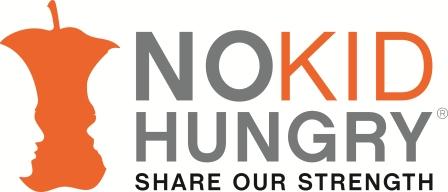 A guest blog by Karen Banks, Program Manager, No Kid Hungry Center for Best Practices
A guest blog by Karen Banks, Program Manager, No Kid Hungry Center for Best Practices
I want to tell you a story about the No Kid Hungry Academy. While this school is fictional, it’s based on real-life statistics and stories we hear from school food service staff, principals, teachers, parents and students.
The No Kid Hungry Academy is a high-need school, in an area where kids struggle with hunger. More than 80% of the Academy’s students are eligible for a free or reduced-price school lunch. The school offers breakfast before the school day begins in the cafeteria, an afterschool snack and has considered becoming a summer meals site. But not enough kids who need these meals are getting them. Teachers notice students are regularly coming to school hungry and lack concentration and motivation in class. The school nurse often treats students complaining about empty stomachs.
The Academy wants all of its students to graduate and succeed. They know they have the skills to serve more meals to kids, but the dollars and cents of expanding programs like school breakfast, afterschool meals and summer meals seem daunting and could hurt their already tight budget. The Academy’s principal has heard that schools in high-need areas that expand school meal participation often don’t just feed more students, but see their bottom line improve too.
It’s for schools like this that we developed the No Kid Hungry School Calculator, in collaboration with Deloitte Consulting LLP. This first-of-its-kind Calculator shows what it really means for a school to expand or modify meals programs. The Calculator gives every school decision maker in America the chance to see how their bottom line could be affected by these programs – and the results can be surprising.
The calculator is easy to use. School decision makers 1) plug in simple information, 2) explore different ways to expand school meals programs like moving breakfast to the classroom or serving afterschool meals, and 3) come out with hard data about costs, number of students served and federal reimbursement dollars. In about 30 minutes school decision makers can see how many more kids they could feed and how much more federal dollars could be coming into their school.
By using the No Kid Hungry School Calculator, the Academy found they could serve more than 500 kids school breakfast by making it a part of the school day, feed 100 kids afterschool meals, and during summertime make sure more than 100 kids get free meals. At the end of the day, the school would see a profit of more than $33,000 thanks to federal reimbursements and about 720 kids will have better access to the food they need to grow and thrive.
See how the Calculator works by watching this video. Help more kids in school get the food they need to succeed. Get started at www.NoKidHungry.org/SchoolCalculator.
Author Bio: Karen Banks joined the No Kid Hungry Center for Best Practices in 2013 to help connect partners with the tools and resources needed to end childhood hunger. Previously, Karen worked at the intersection of urban planning and public health on local food access initiatives. She has an affinity for maps and bees.
